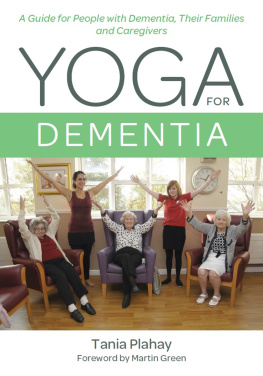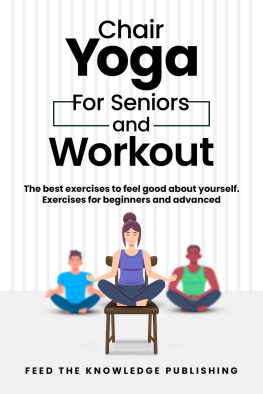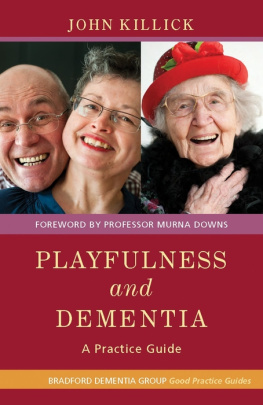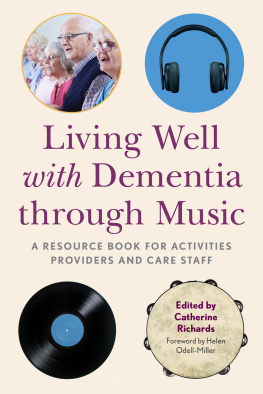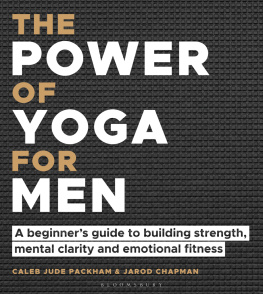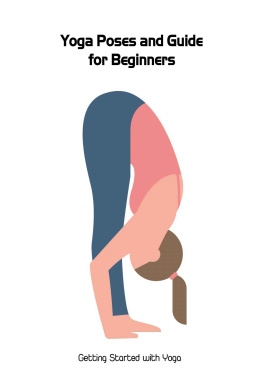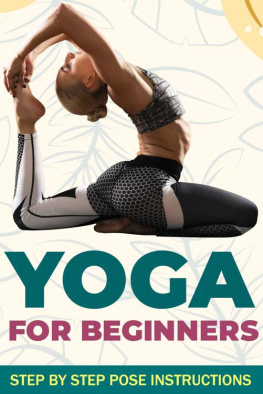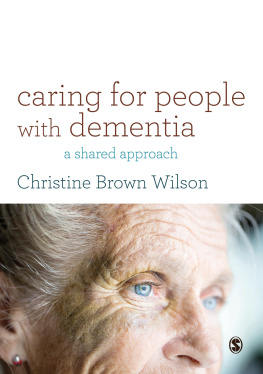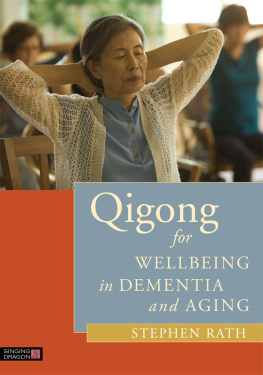
YOGA
FOR
DEMENTIA
A Guide for People with Dementia,
Their Families and Caregivers
Tania Plahay
Foreword by Martin Green

Jessica Kingsley Publishers
London and Philadelphia
CONTENTS
FOREWORD
Professor Martin Green, Chief Executive, Care England, Department of Health and Independent Sector Dementia Champion
In the over 30 years that I have worked in social care, the populations of care homes have changed dramatically. In the past, care homes were often a lifestyle choice for older people who wanted companionship and some support with the activities of daily living. Today, care home residents have many more health conditions, and a large percentage of them are living with some form of dementia. The challenge for the care home sector of the 21st century is to ensure that people have a good quality of life, which will enable them to be as independent as possible. Of course, enabling people to live as long as they can safely and well within their own homes is also key, and this book provides many ways to allow people with early stage dementia to stay well for longer.
I am lucky enough to visit many care homes, and one of the things that I am really delighted to see is how creative and innovative this sector can be, and how it has embraced a range of new approaches that enable people to live well, maintain their independence, and continue to have good quality relationships with their families and friends.
The very best approaches look at the medical and social needs of people, and combine these together in a comprehensive approach, where people have the opportunity to connect with one another, whilst at the same time engaging in an activity that has really positive health benefits.
One of the best examples I have seen of all these things coming together, and making a real difference in the lives of care home residents, is yoga.
For many people who are not familiar with yoga, it is surrounded by myths and misconceptions, and this clouds their view about the benefits of yoga for those living with dementia. In this book, Tania Plahay brilliantly demystifies yoga, and clearly shows the different ways it can be used in care settings and homes, and the outstanding improvements in peoples quality of life that can be achieved for residents.
The majority of people who live in care homes are taking a number of different drugs, and often these medical interventions, which are so important to controlling medical conditions, can also provide a range of side effects, which can leave people feeling lethargic and lacking in the desire or capacity to exercise.
There is also the added challenge for many people of coming to terms with moving into a care home because of a critical illness or frailty. This can often lead to anxiety and depression, and it is important that care services acknowledge this, and find creative ways to support people through their transition from living in their own home to a new life in a care setting.
This book works on so many levels, and gives a really clear route map on how to use yoga as a group activity, as something that individuals can do for themselves, or as part of an individual and bespoke plan to keep people active and well. It also provides many activities that can be done together with family members or carers, which will benefit all those involved.
What is also great about this book is its applicability to so many people who might be at different stages of either physical or cognitive impairment. Yoga is a great way of releasing stress and anxiety, and can be used as a positive way of supporting people who might have a relatively new diagnosis of dementia and are coming to terms with what this will mean for their lives. It is also a great way of connecting with people who are living with dementia and who have significant cognitive impairments. Yoga really can help everyone in the care home setting and those living in their own homes, and Tania explains various ways that care providers and family carers can make it an enjoyable and useful part of a care plan.
The Care Act 2014 is focused on supporting peoples wellbeing, and there is clear evidence that yoga can enhance wellbeing, as well as improve physical and cognitive functioning.
One of the many positive things about this book is the way in which it looks at relaxation techniques and makes them easy and accessible for people living in care homes and their families. Many of the activities outlined can also have positive benefits for the staff, and yoga is an activity that can benefit everyone and can really help us care for the carers.
It is really clear when you see yoga in action that it makes a positive impact on the lives of residents and their families, but as well as seeing the results, Tania Plahays work provides a clear evidence base of the benefits of yoga in care settings and in residential homes.
The work outlined in this book is based on a rigorous 18 months-long study into yoga and its benefits, and builds on the work that Tania has done over many years to prove that yoga does make a difference in the lives of people living in care settings, their families, friends and staff.
I have been fortunate enough to see yoga in action in care homes, and I know that it can make a real difference. I recommend every care home provider to read this book and to use it as the foundation for developing yoga within your own homes and services. Everybody in the care home will feel the benefits, and you will be able to show how your service stands out and deliver a better quality of life to your residents.
INTRODUCTION
This book aims to provide assistance to those living with dementia, their families and carers. Whilst prior experience of practising yoga would, of course, be beneficial, it is absolutely not in any way necessary to get the full benefits of the practices contained within this book. In some ways coming new to yoga at this time may be helpful, as the types of yoga employed in the sequences and the philosophy behind it may be dramatically different from most peoples perception of modern yoga and any experience they may have of practising it. Many people think yoga is complicated, physically or mentally difficult, or you have to be fit and flexible to do it. This misconception is fuelled by the rise of modern western postural yoga with its images of fit, young (mainly) women with bendy bodies in contortionist-like positions.
Before reading further, try to take a moment to leave behind any doubts or concerns that you may have about any physical or mental constraints that you, or the person or people you provide care for, may have. The yoga sequences in this book have been designed, tried and tested with those living with dementia, and for those caring for them to be able to deliver. They are gentle, safe and true to the origins of yoga. Modifications are provided to allow those with increased mobility who wish to take the postures further, and also for those who are less physically able, or have any conditions or factors that mean they should not do a certain pose or exercise.
Often I hear from prospective yoga students and their families the phrases I wont be any good at yoga because I cant touch my toes, or Yoga? My mum cant do yoga, she cant even get herself dressed in the morning! These concerns are usually based on misconceptions about yoga as being a challenging physical practice. Try to leave such preconceptions you may have about yoga behind. Yoga is a very diverse practice, and while it does contain many positions and practices that would not be suitable for those living with dementia, there are many more that are imminently suitable for those living with dementia, their loved ones and carers.
Next page
